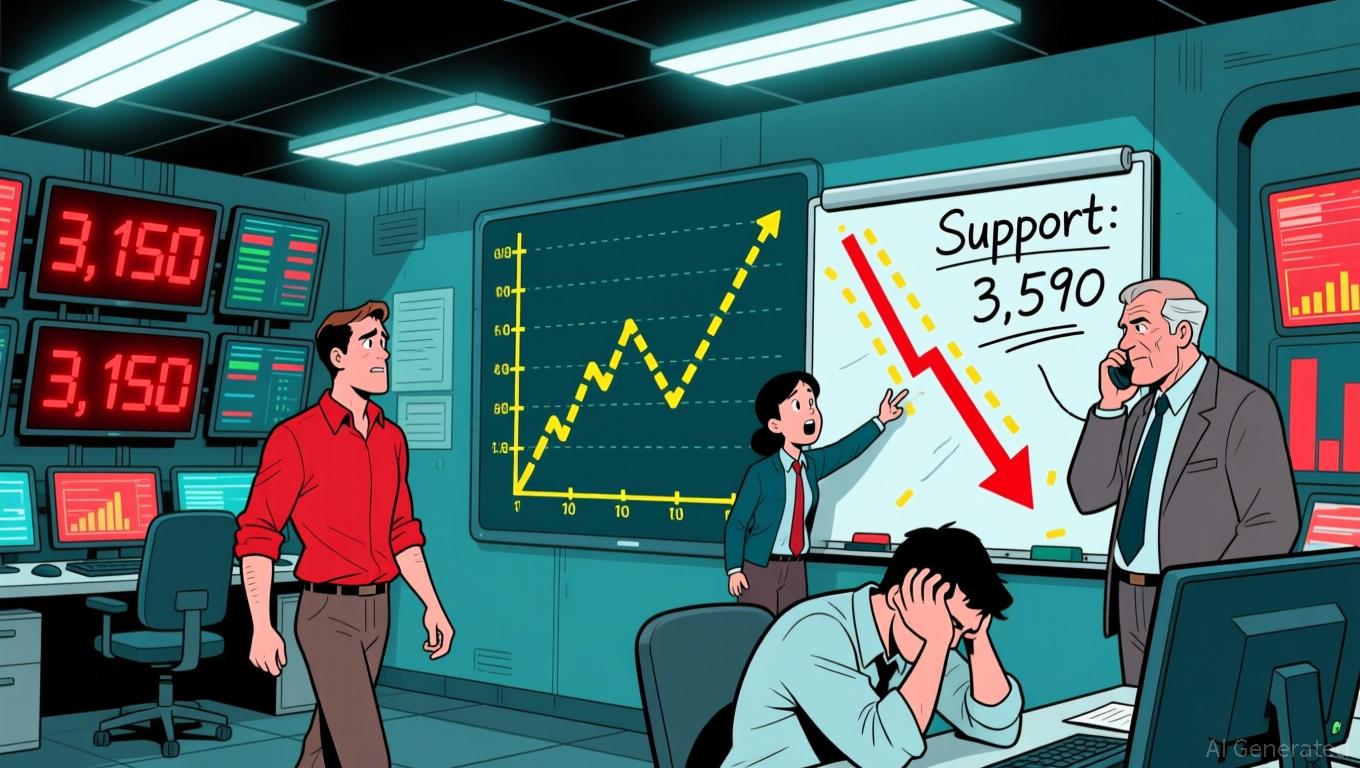Alibaba’s Tokenized Payment Set to Transform International Trade with Real-Time Settlements
- Alibaba and JPMorgan launch Agentic Pay, a tokenized B2B payment system using deposit tokens for instant cross-border settlements. - The platform integrates AI for automated contract generation, streamlining trade documentation while avoiding stablecoins and crypto volatility. - Backed by bank-held fiat deposits (JPMorgan's JPMD tokens), it aligns with China's regulatory preferences and offers yield-bearing features for institutional users. - Projected to process billions annually, the system could redef
Alibaba Group Holding Ltd. is set to introduce a tokenized payment platform by December, aiming to transform cross-border B2B payments,
The new service, named "Agentic Pay," will incorporate AI to

Unlike stablecoins, which are generally supported by assets such as bonds or fiat reserves, Alibaba's tokenized payment system uses "deposit tokens" that are directly linked to actual
This initiative comes as China increases oversight of stablecoins, which are often issued by non-bank organizations and operate in a regulatory gray area. Alibaba's deposit tokens, which are backed by fiat currency held in banks, are consistent with China's preference for centralized, bank-supported digital money
Experts estimate that this collaboration could handle billions of dollars in settlements each year, positioning Alibaba at the forefront of tokenized B2B financial services
Disclaimer: The content of this article solely reflects the author's opinion and does not represent the platform in any capacity. This article is not intended to serve as a reference for making investment decisions.
You may also like
Uniswap News Today: Uniswap's Tokenomics Revamp Ignites Discussion: Expansion Ahead or Liquidity Outflow?
- Uniswap launches Continuous Clearing Auctions (CCA) with Aztec Network to enhance token distribution transparency and liquidity via on-chain price discovery. - The UNIfication proposal redirects swap fees to burn UNI tokens, creating deflationary pressure and boosting value through 0.05%-25% fee allocations. - Market reacts positively with 40% UNI price surge, but critics warn of liquidity risks and competition from DEX rivals like Aerodrome. - Aztec's CCA-powered token sale tests the system, prioritizin
Bitcoin Updates: Saylor Remains Confident in Bitcoin, Driving Strategy's Aggressive Investment Despite Market Downturn
- Michael Saylor denies rumors of selling Strategy's 641,692 BTC ($22.5B) amid market selloff, reaffirming long-term accumulation strategy . - Bitcoin fell below $96,000 as MSTR dropped 35% YTD, but Saylor claims recent 487 BTC purchase shows accelerated buying. - Analysts call current BTC correction a "mid-cycle consolidation" phase, noting historical patterns from 2024-2025 market analysis. - Strategy's $20.29B unrealized gains and Saylor's "long-haul" stance highlight Bitcoin's perceived store-of-value

Ethereum News Update: Is the $3,150 Level Ethereum's Final Defense Against a Steeper Drop?
- Ethereum's price dropped 10% to $3,150, testing critical support as market participants assess rebound potential amid mixed institutional and retail demand. - A breakdown below $3,590 triggered accelerated selling, with 138% above-average volume indicating institutional participation in the selloff. - Broader crypto market declines saw Bitcoin fall to $97,000 and $260M in ETH ETF outflows, signaling waning institutional confidence. - Technical indicators show Ethereum failing the 200-day EMA and RSI in d

Bitcoin News Update: Bitcoin's 72% Profit Rate Puts Pressure on Death Cross Bearish Predictions
- Bitcoin's recent drop below $107,250 triggered "death cross" fears but analysts note it's less severe than the 2022 crash. - Bitfinex identifies mid-cycle consolidation, with 72% of BTC supply still profitable at $100,000, signaling potential stabilization. - Market resilience contrasts 2022's systemic risks, as ETF inflows and stablecoin adoption highlight evolving crypto dynamics. - Key price levels ($107,250/$100,000) will determine bearish validity, though historical false signals caution against ove
